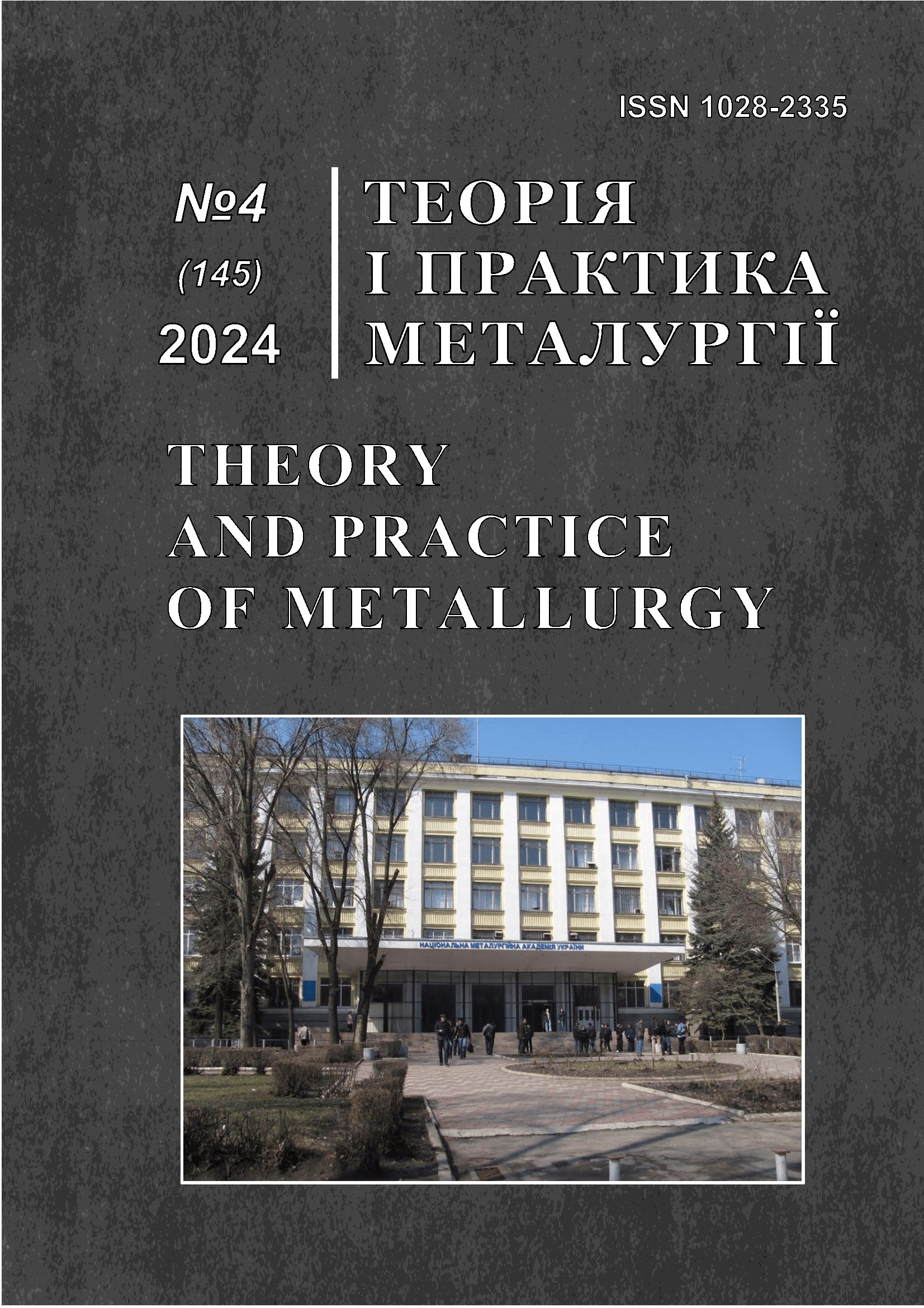Technical and economic features of using chill molds with cast gauges for producing rolling rolls for section rolling mills
DOI:
https://doi.org/10.15802/tpm.4.2024.02Keywords:
rolling roll, chill mold, cast gauges, hot cracks, eliminationAbstract
Purpose. To improve the production technology of rolling rolls with cast gauges and to reduce the formation of longitudinal hot cracks during casting in stationary molds. Methodology. The efficiency of the developed technological solutions was evaluated by measuring the thickness of the chilled cast iron layer on both standard and experimental rolling rolls, as well as on laboratory test castings. Measurements were carried out using devices that passed state metrological certification under the conditions of the Dnipro Rolling Roll Plant, in compliance with current technical specifications. Findings. The primary cause of longitudinal hot cracks during the casting of rolls with cast gauges is the insufficient contact between the mold halves along the parting plane. As a result, the layer of solidified metal in the vertical parting zone is thinner than on other surfaces of the mold. Metal solidification is accompanied by shrinkage, creating stresses that lead to cracking in areas with thinner solidified metal layers. A sealing paste was developed and successfully tested for filling gaps between the mold halves. The paste consists of brass, bronze, and copper shavings with particle sizes up to 2.0 mm mixed with liquid glass. To increase the heat dissipation rate from the solidifying metal, the gaps between the mold halves were also welded using copper electrodes. However, their high cost and the necessity for constant welding prior to iron pouring prompted the development of a new casting mold technology. This technology involves casting molds with permanent 3 mm thick copper inserts along the parting plane. The end surface of the copper inserts matched the profile of the gauges in the cast iron mold. Using the new mold, three defect-free rolls intended for the rolling of plowshares (149D model) were successfully cast. Tests of the mold with copper inserts are ongoing to evaluate its service life and the economic feasibility of its implementation. Originality. A sealing paste composition for filling gaps between mold halves was developed and successfully tested. The paste comprises brass, bronze, and copper shavings with particle sizes up to 2.0 mm and liquid glass. A mold design with permanent copper inserts along the parting plane was developed and cast, with the end surface of the copper matching the profile of the gauges in the cast iron mold. Using the new mold, three defect-free rolls were produced and dispatched for operational testing. Practical value. The use of the developed sealing paste for filling gaps between mold halves reduced rejects caused by longitudinal hot cracks. The new mold design, with permanent copper inserts along the parting plane, increased heat dissipation rates and eliminated longitudinal hot cracks on the rolls.
References
Krivosheev, A. E. (1957). Cast rolls. Metallurgizdat
Leibenzon, V. O., Pilyushenko, V. L., Kondratenko, V. M., et al. (2009). Hardening of metals and metal compositions. Textbook for universities. The 2-nd edition. Scientific opinion. https://nmetau.edu.ua/file/tverdinnya_metaliv_i_metalevih_kompozitsiy._pidruchnik..pdf
TU U 28.9-00187375-106:2018. (2018). Cast iron and steel rolls for hot rolling of metals. Dnipropetrovsk Rolling Mill Plant. https://nmetau.edu.ua/file/ty_y_28.9-00187375-106-2018_rollers_cast_iron_and_steel.pdf
Skoblo, T. S., Klochko, O. Iu., Belkyn, E. L., & Sydashenko, A. Y. (2018). Novye podkhody v izuchenii neodnorodnosti geterogennykh struktur. Metallofizika. Noveishie Tekhnologii, 40(2) 255-280. https://doi.org/10.15407/mfint.40.02.0255
Ponomarenko, O., Yevtushenko, N., Berladir, K., Zapolovskyi, M., Krmela, J., Krmelová, V., & Artyukhov, A. (1983). Modeling and Optimization of Properties of the Environmentally Clean Molds Based on Oligofurfuryloxysiloxanes for the Production the Metal Castings. Polymers, 14, 1883. https://doi.org/10.3390/polym14091883
Vetiška, A., Bradik, J., Matsashek, I., & Slovak, S. (1974). Teoretické základy slévárenské technologie. Praha. SNTL – ALFA
Repyakh, S. Y., Menyailo, E. V., Proydak, Yu. S., Khrychikov, V .E. (2014). To the question of the formation of hot cracks in cast products and welds. Metallurgical and mining industry, (3), 37-41. https://www.metaljournal.com.ua/metal-gp3-2014/
Yamshinskij, M., Fedorov, G., & Verkhovliuk, A. (2016). The development of new casting alloys intended for operation under extreme conditions and some techniques of making castings from them. “EUREKA: Physical Sciences and Engineering”, (2(3)), 51-60. https://foundry.kpi.ua/wp-content/uploads/2020/03/33-175-1-pb.pdf
Fesenko, E. V., Mogylatenko, V. G., Fesenko, A. N., Kosyachkov, V. A., Fesenko, M. A. (2015). Manyfacture of two-layers and double-sided iron castings with differential structure and properties EUREKA: Physical Sciences and Engineering”, (1), 55-59. https://foundry.kpi.ua/wp-content/uploads/2020/03/maksym_fesenko.pdf
Downloads
Published
How to Cite
Issue
Section
License
Copyright (c) 2024 Khrychikov V.E., Meniailo O.V., Semenov А.D., Kovalchuk V.I., Semenova T.V.

This work is licensed under a Creative Commons Attribution 4.0 International License.
Authors retain copyright of the published papers and grant to the publisher the non-exclusive right to publish the article, to be cited as its original publisher in case of reuse, and to distribute it in all forms and media. Articles will be distributed under the Creative Commons Attribution 4.0 International (CC BY 4.0) licence.
Authors can enter the separate, additional contractual arrangements for non-exclusive distribution of the published paper (e.g., post it to an institutional repository or publish it in a book), with an acknowledgement of its initial publication in this journal.




